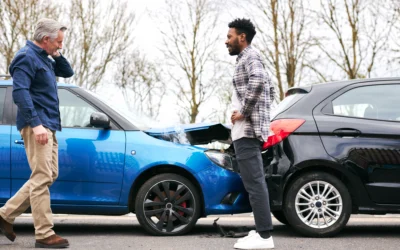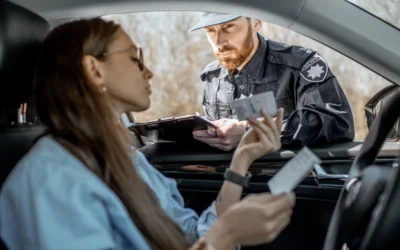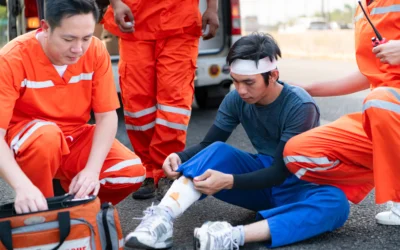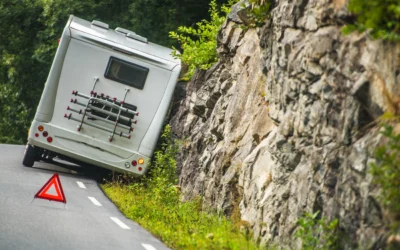Nevada’s Youth Behind the Wheel: A Growing Safety Concern
Teen driving accidents in Nevada are becoming a major worry for families and communities across the state. Every year, more young drivers hit the roads, and sadly, not all of them make it home safely. In recent years, we’ve seen a troubling rise in crashes involving teenage drivers, especially in busy areas like Las Vegas and Reno.
What’s causing this increase in teen driving accidents? Is it just about being young and new to driving, or are there other factors at play? As we dig deeper into this issue, we’ll find that the answers aren’t always simple, but they are important for everyone to understand.
By looking at why these accidents happen and what we can do about them, we can work together to make Nevada’s roads safer for all drivers, especially our youngest ones.
Key Takeaways:
- Teen driving accidents in Nevada are a growing concern, especially in busy areas like Las Vegas and Reno. The main reasons for these accidents include inexperience, distraction (particularly from phones and friends), speeding, and fatigue. Understanding these factors is important for preventing accidents and keeping young drivers safe on roads.
- After a teen driving accident, it’s important to prioritize safety, call the police, gather information, and seek medical attention. In Nevada, responsibility for teen driving accidents can fall on the teen driver, parents, or even the car owner. Insurance plays a big role and accidents can have long-lasting financial and legal consequences for families.
- Nevada has specific laws for teen drivers, including a graduated license system and zero tolerance for alcohol. Breaking these rules can lead to fines, license suspension, and long-term consequences. To prevent accidents, teens should follow safe driving practices, while parents should set good examples and establish clear rules. If an accident occurs, seeking legal help from firms like Joey Gilbert Law can be beneficial.
Behind the Wheel: Why Teens Crash
Understanding why teen drivers are more likely to be in accidents is key to preventing them. Let’s look at four main reasons:
The Inexperienced Factor
New drivers are like new players in any game – they’re still learning the rules and how to react. Teens often struggle with things like judging distances or spotting dangers on the road. They might not know how to handle tricky situations, like driving in heavy rain or on icy roads. This lack of experience can lead to poor choices in critical moments.
The Distraction Dilemma
Teens today grow up with phones in their hands, and it’s hard to put them down – even while driving. Texting, checking social media, or even just changing the music can take a driver’s eyes off the road long enough for an accident to happen. Friends in the car can also be a big distraction, taking the driver’s focus away from the road.
Speed and Impulse
There’s often a thrill that comes with driving fast, and some teens give in to this urge. They might speed to impress friends, or simply because they don’t fully grasp how dangerous it can be. Speeding reduces the time a driver has to react to problems and makes accidents more likely and more severe.
Fatigue and Focus
Many teens have packed schedules with school, sports, jobs, and social lives. This can lead to tired driving, especially at night. A tired driver is a dangerous driver – their reactions are slower, and they might even fall asleep at the wheel. Add in the fact that many teens are still learning to focus for long periods, and you have a recipe for potential accidents.
Seatbelt Usage
Despite knowing the importance of seatbelts, many teens still don’t use them consistently. Not wearing a seatbelt doesn’t cause accidents, but it significantly increases the risk of serious injury or death when a crash occurs.
Nighttime Driving
Driving at night is more challenging for all drivers, but especially for inexperienced teens. Reduced visibility, fatigue, and a higher likelihood of encountering impaired drivers all contribute to the increased risk of nighttime accidents for teen drivers.
Environmental Factors
Road conditions play a big role in teen driving accidents. Wet or icy roads, poor lighting, and unfamiliar routes can all pose challenges that inexperienced drivers might struggle to handle safely.
By understanding these factors, we can start to see why teen driving accidents are such a concern. But knowing the problems is just the first step – next, we’ll look at what happens when these accidents occur.
When Accidents Happen: The Aftermath
No one wants to think about being in an accident, but knowing what to do if it happens is important, especially for teen drivers. Let’s walk through the steps to take after a crash:
- Safety First. The moment after an accident can be scary and confusing. The first thing to do is check if anyone is hurt. If it’s safe, move the car to the side of the road. Turn on the hazard lights to warn other drivers. If the car can’t be moved or if someone is injured, leave the vehicle where it is and call 911 right away.
- Call the Police. Even for small accidents, it’s a good idea to call the police. They’ll make a report, which is important for insurance claims later. In Nevada, you must report any accident that causes injury, death, or more than $750 in damage.
- Gather Information. While waiting for the police, exchange information with the other driver. Get their name, phone number, address, insurance company, and policy number. Also, try to get the names and contact info of any witnesses. Take photos of the damage to all cars involved and the accident scene if it’s safe to do so.
- See a Doctor. Sometimes, injuries from car accidents don’t show up right away. Even if you feel fine, it’s smart to get checked out by a doctor. Some injuries, like whiplash or concussions, might not be obvious at first but can cause problems later if not treated.
- Contact Insurance. Let your insurance company know about the accident as soon as you can. They’ll guide you through the next steps for making a claim. Be honest about what happened, but stick to the facts. Don’t admit fault or blame others – leave that for the insurance companies and police to figure out.
- Keep Records. Save all papers related to the accident. This includes the police report, medical bills, repair estimates, and any notes about missed school or work. These will be important if you need to make an insurance claim or if there are legal issues later.
Remember, the actions taken right after an accident can make a big difference in how things turn out. For teen drivers, being prepared and knowing these steps can help make a stressful situation a little easier to handle.
Prevention Strategies for Teen Driving Accidents
Preventing teen driving accidents requires a combination of understanding laws, developing good habits, and knowing how to handle the aftermath. Here are key strategies for teens and parents:
- Understand and Follow Nevada’s Graduated Driver’s License (GDL) System: Nevada’s Graduated Driver’s License (GDL) system helps new drivers build experience step by step. At 15 and a half, you can get a permit and complete 50 hours of supervised driving, while at 16, you must follow rules like limiting night driving and passengers. Violating these rules can lead to fines or license suspension.
- Prioritize Safe Driving Habits: Always focus on safe driving by wearing a seatbelt, obeying speed limits, and avoiding phone use while driving. If you’re tired or emotional, it’s best not to drive. Also, limit nighttime driving and the number of passengers to stay safe.
- Know the Consequences: In Nevada, unsafe driving has serious consequences, especially for young drivers. The state enforces zero tolerance for underage drinking and driving, with strict penalties. Accumulating traffic violation points can lead to license suspension, higher insurance rates, and even long-term impacts on job opportunities.
- Parents Must Be Actively Involved: Parents must actively guide their teens in becoming safe drivers by setting a good example and practicing driving in different conditions. Establish clear rules for driving privileges and consider using apps to monitor driving behavior. Encouraging open communication about their experiences is also key to building their confidence on the road.
- Continuous Improvement: Driving is a skill that can always be improved, so treat it as a continuous learning process. Consider taking extra driver education courses to sharpen your abilities and stay informed about changes in traffic laws that may affect your driving.
Remember, preventing teen driving accidents is a shared responsibility. By following these strategies, teens can build safe driving habits, and parents can provide important support and guidance. In the event of an accident, knowing how to respond can make a significant difference in the outcome.
Protecting Families Affected by Teen Driving Accidents in Nevada
Teen driving accidents can have lasting impacts on families. At Joey Gilbert Law, we understand the legal and personal challenges these situations bring. Our Nevada law firm handles various areas of law, including personal injury and family law, which are often relevant in teen driving accident cases.
We can guide you through insurance claims, explain your legal rights, and help address any criminal defense needs that may arise. Our knowledge of Nevada law allows us to offer valuable advice tailored to your situation.
Don’t let a teen driving accident in Nevada overwhelm your family. Contact Joey Gilbert Law today for a free consultation and take the first step towards resolving your legal concerns.




